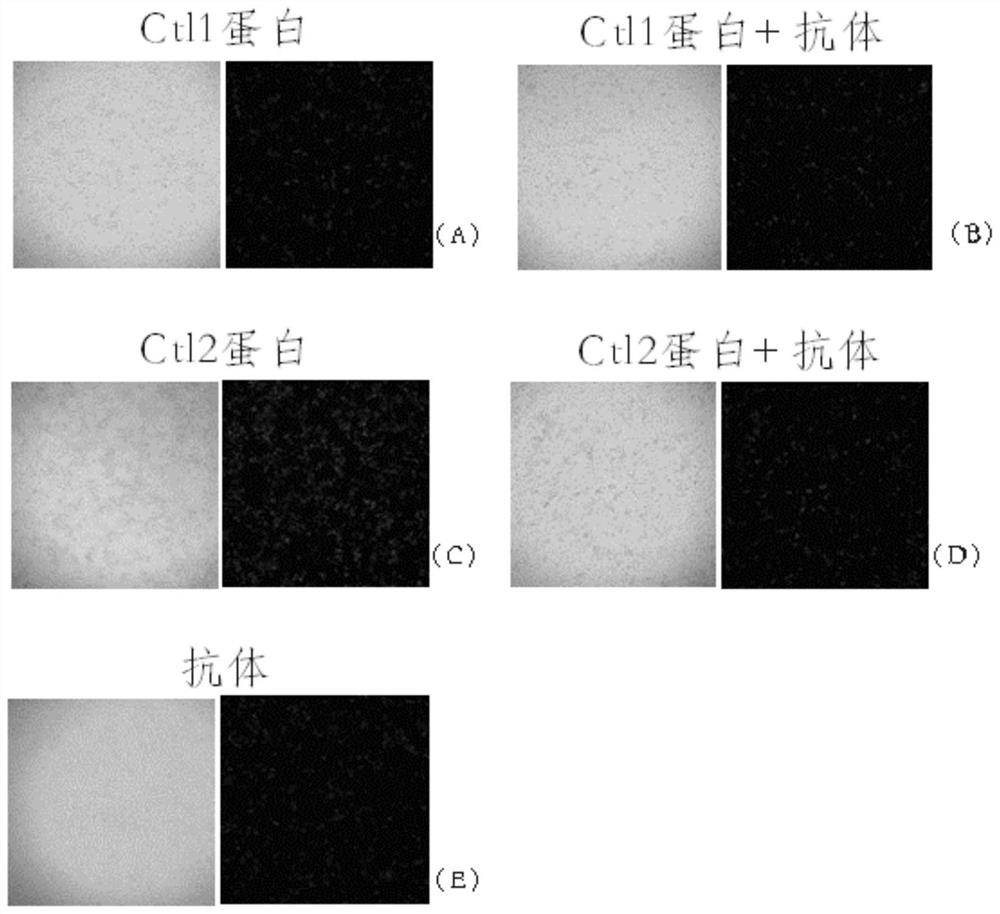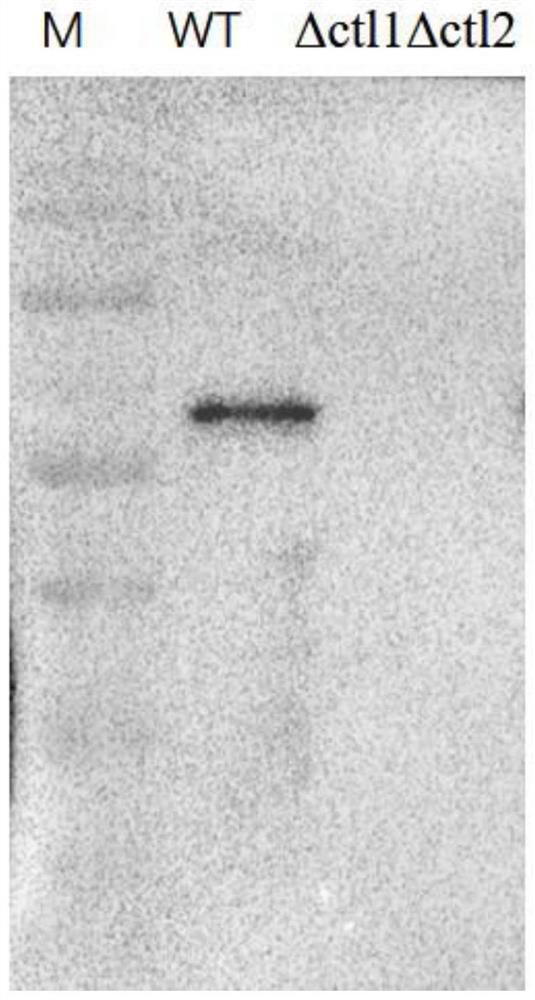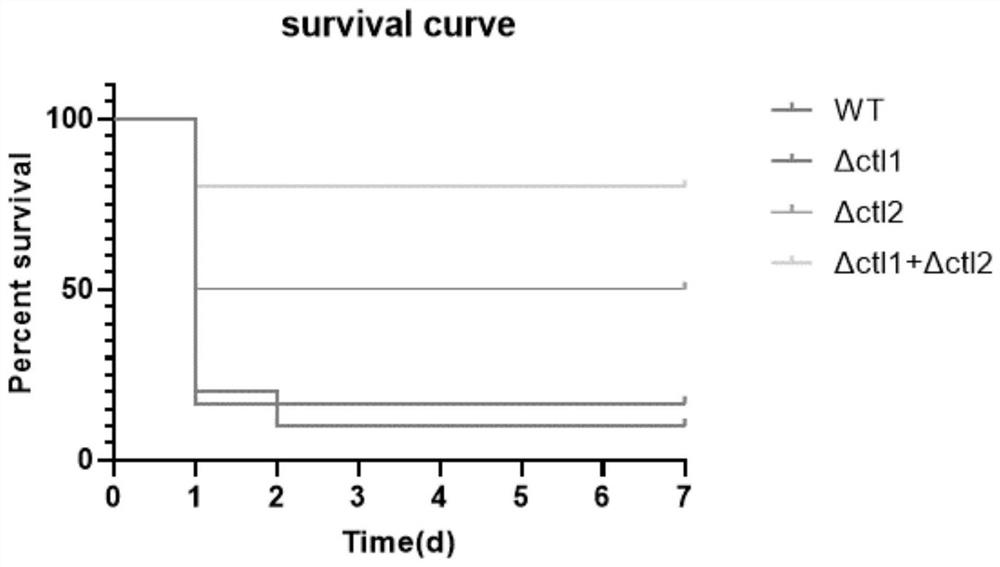Application of flavobacterium columnare virulence protein in pathogen detection and low virulent strain preparation
A technology of Flavobacterium columnar and attenuated strains, applied in the field of molecular biology, can solve the problems of low homologous recombination efficiency, difficulty in exogenous genes, and difficulty in genetic modification, etc.
- Summary
- Abstract
- Description
- Claims
- Application Information
AI Technical Summary
Problems solved by technology
Method used
Image
Examples
Embodiment 1
[0038] Obtaining the virulence protein of Flavobacterium columnar:
[0039] According to the whole genome sequences of 62 strains of Flavobacterium columnar that have been published so far, combined with the infection characteristics of Flavobacterium columnarum, the possible virulence genes were screened out. The exogenously expressed proteins of these genes are obtained through in vitro expression and affinity purification. These proteins were co-incubated with fish cells to detect their virulence. It was found that only protein cytolysin with Thiol-activated cytolysin superfamily domain could cause fish cell pathology. After comparing the two cytolysin coding sequences ctl1 and ctl2, it was found that although the two sequences are highly similar and have the same structural domain (Thiol-activated cytolysin superfamily), only the prokaryotic expression protein of ctl2 has a significant lytic effect on cells, so The amino acid sequence of the ctl1 is shown in SEQ ID NO.1,...
Embodiment 2
[0041] The virulence detection of prokaryotic expression proteins of Flavobacterium columnar ctl1 and ctl2 genes, the specific methods include:
[0042] (1) Prokaryotic expression and purification of Ctl1 and Ctl2 proteins
[0043] The 25-558aa region of the Ctl1 protein and the 23-558aa region of the Ctl2 protein were respectively cloned into the pGEX-4T-AB1 vector, and the expression plasmids were transformed into Escherichia coli Rosseta (DE3) strain. The strain carrying the expression plasmid was induced to express at 16°C for 16 hours, and subjected to crushing treatment. The crushed supernatant was purified and digested, the GST tag was removed, and the endotoxin was removed for later use.
[0044] (2) Preparation of polyclonal antibody against virulence protein cytolysin
[0045] Select the virulence protein cytolysin epitope synthetic polypeptide (KNLKQESIHDGPKSE) to prepare rabbit polyclonal antibody. The polyclonal antibody of Flavobacterium columnar cytolysin is ...
Embodiment 3
[0054] The construction of attenuated strain of Flavobacterium columnar:
[0055] (1) The initiation codon encoded by the open reading frame of the ctl1 gene and its upstream sequence (2084bp in total) are cloned into the PstI and SalI restriction sites of the Flavobacterium columnar suicide plasmid pMS75, and then the termination codon of the gene ORF The progeny and its downstream sequences (total 1989bp) were cloned into the BamHI and SalI restriction sites of the suicide plasmid pMS75. Finally, the suicide plasmid pNL-73 for ctl1 gene deletion was formed.
[0056] (2) Using the same method, clone the start codon of the ctl21 gene and its upstream sequence (2069bp in total) to the BamHI and SalI restriction sites of the suicide plasmid pMS75, and then clone the stop codon of the gene ORF and its downstream The sequence (2011bp in total) was cloned into the SalI and PstI restriction sites of the suicide plasmid pMS75. Finally, the suicide plasmid pNL-65 for ctl2 gene delet...
PUM
 Login to View More
Login to View More Abstract
Description
Claims
Application Information
 Login to View More
Login to View More - R&D Engineer
- R&D Manager
- IP Professional
- Industry Leading Data Capabilities
- Powerful AI technology
- Patent DNA Extraction
Browse by: Latest US Patents, China's latest patents, Technical Efficacy Thesaurus, Application Domain, Technology Topic, Popular Technical Reports.
© 2024 PatSnap. All rights reserved.Legal|Privacy policy|Modern Slavery Act Transparency Statement|Sitemap|About US| Contact US: help@patsnap.com










